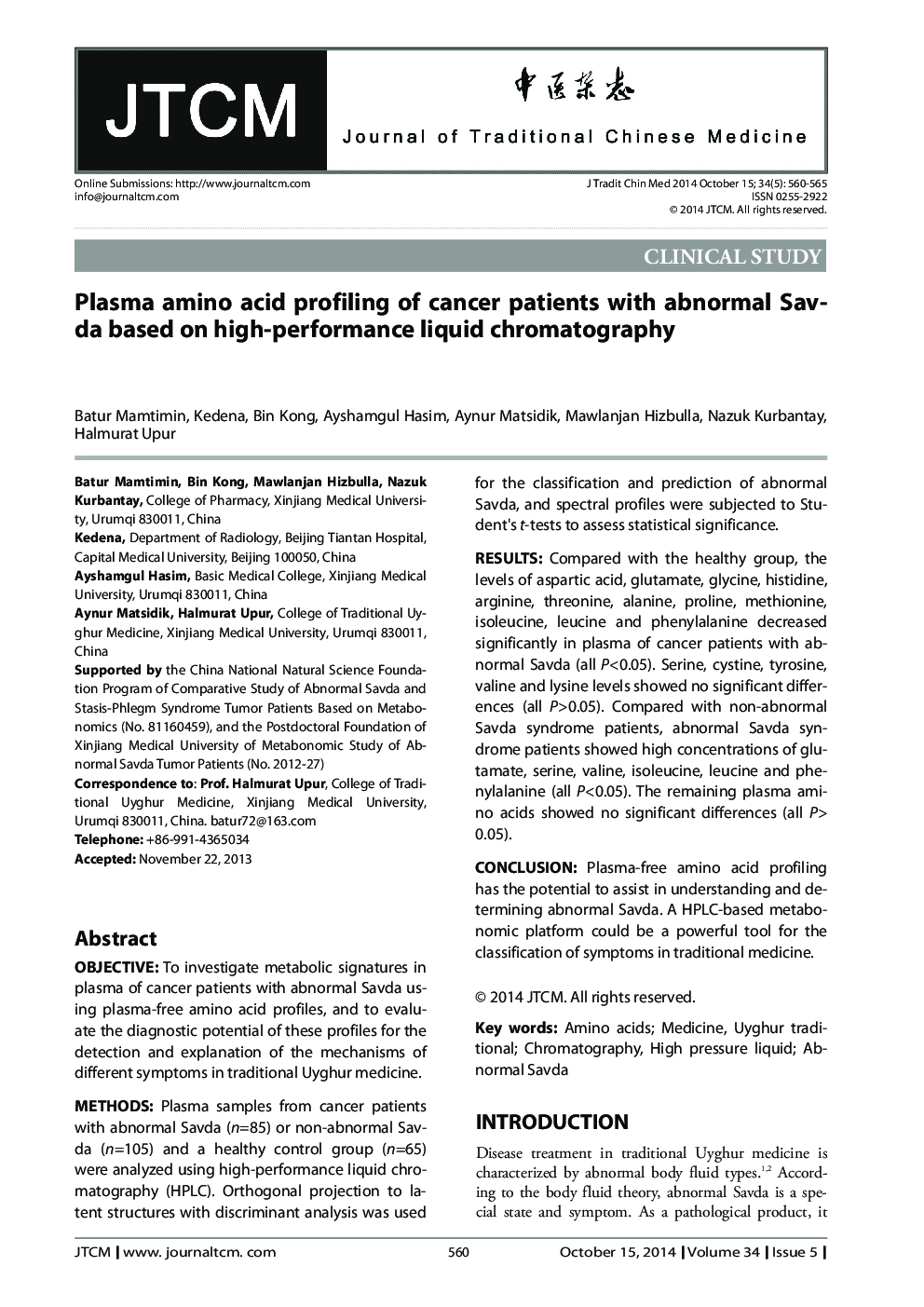| Article ID | Journal | Published Year | Pages | File Type |
|---|---|---|---|---|
| 4201002 | Journal of Traditional Chinese Medicine | 2014 | 6 Pages |
ObjectiveTo investigate metabolic signatures in plasma of cancer patients with abnormal Savda using plasma-free amino acid profiles, and to evaluate the diagnostic potential of these profiles for the detection and explanation of the mechanisms of different symptoms in traditional Uyghur medicine.MethodsPlasma samples from cancer patients with abnormal Savda (n=85) or non-abnormal Savda (n=105) and a healthy control group (n=65) were analyzed using high-performance liquid chromatography (HPLC). Orthogonal projection to latent structures with discriminant analysis was used for the classification and prediction of abnormal Savda, and spectral profiles were subjected to Student's t-tests to assess statistical significance.ResultsCompared with the healthy group, the levels of aspartic acid, glutamate, glycine, histidine, arginine, threonine, alanine, proline, methionine, isoleucine, leucine and phenylalanine decreased significantly in plasma of cancer patients with abnormal Savda (all P<0.05). Serine, cystine, tyrosine, valine and lysine levels showed no significant differences (all P>0.05). Compared with non-abnormal Savda syndrome patients, abnormal Savda syndrome patients showed high concentrations of glutamate, serine, valine, isoleucine, leucine and phenylalanine (all P<0.05). The remaining plasma amino acids showed no significant differences (all P> 0.05).ConclusionPlasma-free amino acid profiling has the potential to assist in understanding and determining abnormal Savda. A HPLC-based metabonomic platform could be a powerful tool for the classification of symptoms in traditional medicine.
